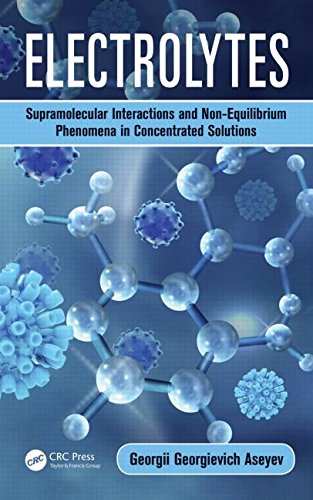

Most ebook files are in PDF format, so you can easily read them using various software such as Foxit Reader or directly on the Google Chrome browser.
Some ebook files are released by publishers in other formats such as .awz, .mobi, .epub, .fb2, etc. You may need to install specific software to read these formats on mobile/PC, such as Calibre.
Please read the tutorial at this link: https://ebookbell.com/faq
We offer FREE conversion to the popular formats you request; however, this may take some time. Therefore, right after payment, please email us, and we will try to provide the service as quickly as possible.
For some exceptional file formats or broken links (if any), please refrain from opening any disputes. Instead, email us first, and we will try to assist within a maximum of 6 hours.
EbookBell Team

0.0
0 reviewsElectrolyte solutions play a key role in traditional chemical industry processes as well as other sciences such as hydrometallurgy, geochemistry, and crystal chemistry. Knowledge of electrolyte solutions is also key in oil and gas exploration and production, as well as many other environmental engineering endeavors. Until recently, a gap existed between the electrolyte solution theory dedicated to diluted solutions, and the theory, practice, and technology involving concentrated solutions.
Electrolytes: Supramolecular Interactions and Non-Equilibrium Phenomena in Concentrated Solutions addresses concentrated electrolyte solutions and the theory of structure formation, super and supramolecular interactions, and other physical processes with these solutions—now feasible due to new precision measurement techniques and experimental data that have become available.
The first part of the book covers the electrolyte solution in its stationary state—electrostatic, and various ion-dipole, dipole-dipole, and mutual repulsion interactions. The second part covers the electrolyte solution in its nonstationary status, in the case of forced movement between two plates—electrical conductivity, viscosity, and diffusion. This theoretical framework allows for the determination of activity coefficients of concentrated electrolyte solutions, which play a key role in many aspects of electrochemistry and for developing novel advanced processes in inorganic chemical plants.